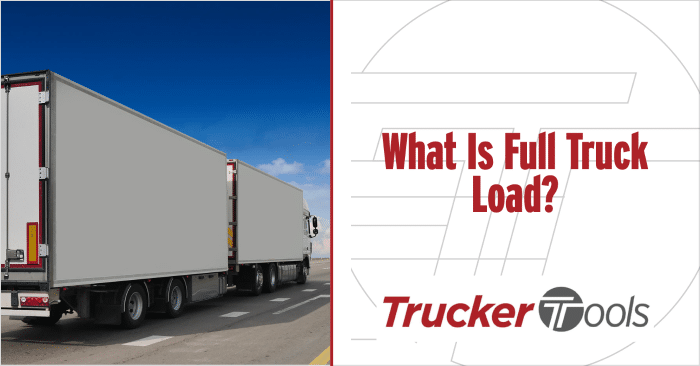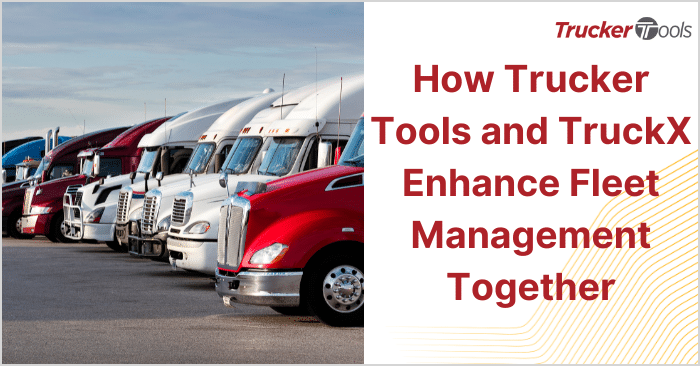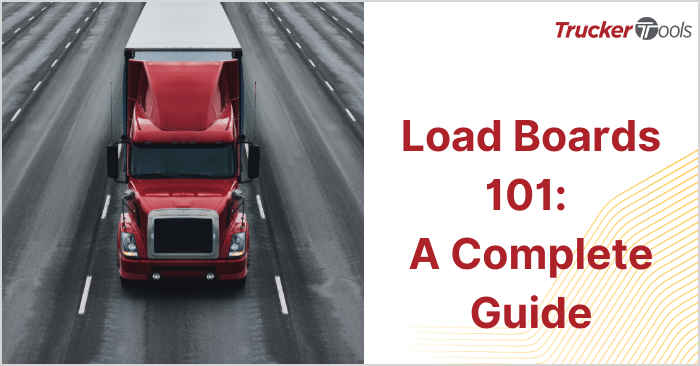Full truck load, also known as FTL, is a term that refers to ground transportation by a semi-truck in which the entire truck and its trailer are dedicated to a single load or shipment. Generally speaking, full truck load transportation services are recommended for heavy haul and large shipments. It’s also the preferred mode of transportation for loads that require special handling or a specific temperature. In this blog, you’ll learn more about full truck load transportation services, how full truck load differs from less than truckload transportation and how to find full truck load capacity as a freight broker.
What Constitutes Full Truck Load and How It’s Used
In general, full truck load uses all the space in the big rig’s trailer and the full (or close to full) weight capacity of the truck and its trailer. For trailers that are 48 feet or 52 feet long, a full truck load can fit up to 26 non-stackable pallets or 52 stackable pallets. Keep in mind, however, that what constitutes a full truck load can depend on the size of the trailer and its tractor. Most trailers also have a maximum weight limit of approximately 44,000 lbs.
Full truck loads are ideal for moving large amounts of product with a single shipper and without multiple stops. When you contract with a carrier for full truck load transportation services, you’re paying for the entire trailer. Full truck load shipments tend to be delivered the quickest, as there are fewer pickups and stops when compared with other types of ground transportation. One of the many advantages of full truck load is that fewer stops means less handling of the freight, which reduces the chance of damage and theft. Full truck load also can reduce costs for your shippers, as there are fewer accessorial fees charged.
Different Types of Full Truck Load
Within full truck load transportation services, there are several different kinds of trailers and equipment used for different types of loads.
Dry Van
Dry van trailers typically are used in truck load transportation when the freight doesn’t require special temperatures while in transit. A dry van is completely covered, protecting the goods transported from the elements. Dry van freight is the most common type of freight that’s transported by commercial trucks.
Refrigerated/Reefer
Refrigerated trailers are enclosed trailers used for shipments that must be transported at specific temperatures. Also referred to as a reefer, refrigerated trailers often are used to ship food and produce, chemicals, pharmaceuticals and other goods.
Flatbed
Full truck load flatbed trailers are often used for transporting large pieces of equipment. Unlike reefer or dry van trailers, flatbed trailers typically are open and freight can be loaded from the side or from above. Flatbeds are used when the cargo doesn’t fit within the dimensions of a typical trailer. Forklifts and cranes may be used to load a flatbed trailer.
Full Truck Load vs. Less Than Truckload (LTL)
In contrast to full truck load, less than truckload transportation services are used when the goods needing to be transported don’t fill an entire dry van or other type of trailer. With LTL ground transportation, there may be multiple shippers, multiple types of products and multiple stops associated with the shipment. LTL takes longer than full truck load and LTL shipments are handled more frequently than FTL freight, which means they’re more likely to be damaged. With less than truckload shipments, shippers often are charged accessorial fees, which are extra charges for unloading/loading, packing/unpacking and layover time (also known as detention or dwell time) at shipper and/or receiver docks.
How Freight Brokers Can Find Full Truck Load Carrier Capacity
For freight brokers, the most efficient and cost-saving method for finding and booking full truck load motor carrier capacity is to use a real-time load board. Real-time load boards reduce the manual tasks associated with traditional methods for locating and securing full truck load transportation. Before the advent of real-time load boards, most freight brokers manually called carriers one by one by phone to ask if they had a truck available for each load brokered. This made sourcing full truck load capacity a time-consuming and resource-intensive process.
Today, freight brokers like you can find and secure truck load carrier capacity much faster than is possible with traditional load boards that aren’t real-time or by manually calling carriers. Using a real-time load board gives you access to time-saving tools that ultimately help you work more efficiently and cover your shippers’ full truck load transportation needs faster, boosting service levels and increasing internal productivity. With the use of real-time load boards, you can automate your rate negotiations with carriers, access real-time rate data on specific lanes, and even give carriers and owner operators the ability to book your loads at any time through a mobile app or web browser.
Discover “What Is Double Brokering and How To Safeguard Against It.”







